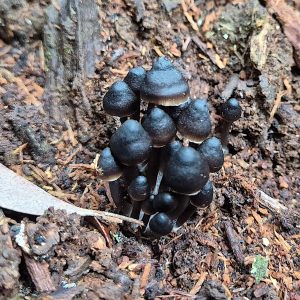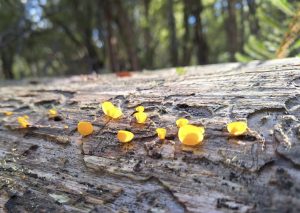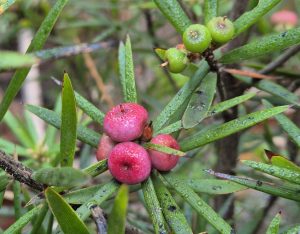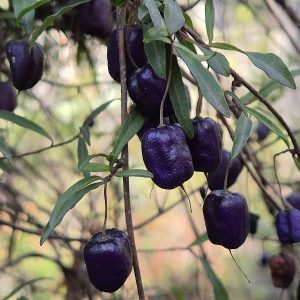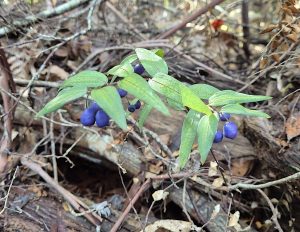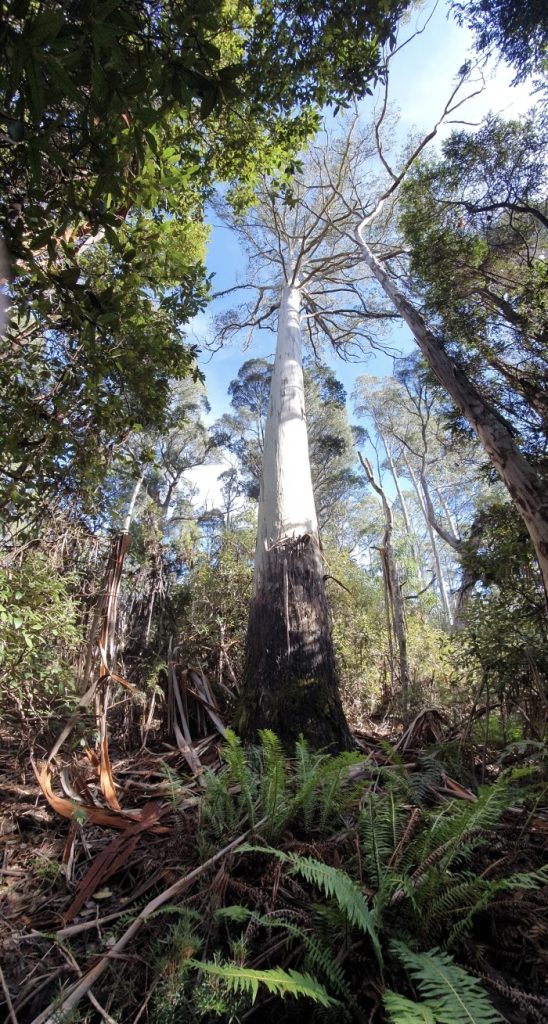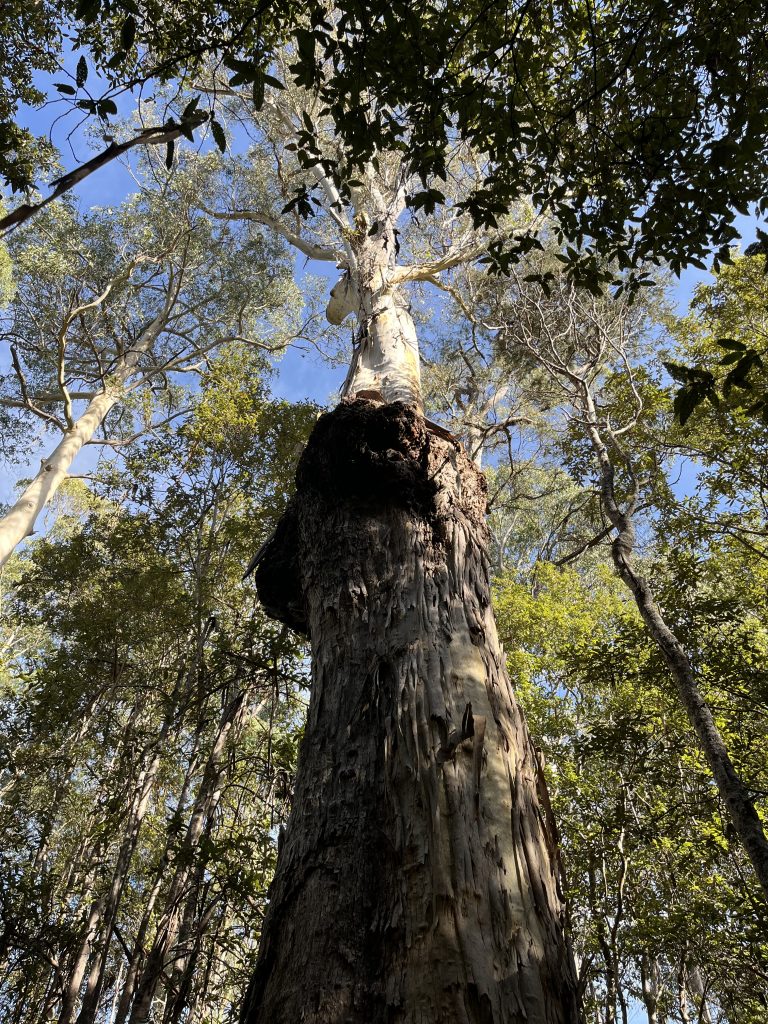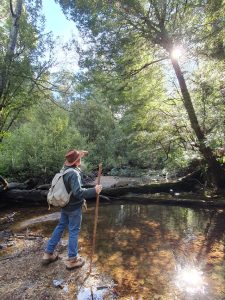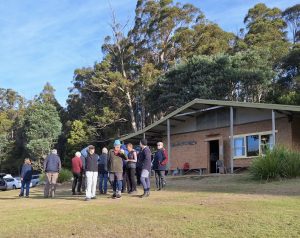Our May outing was to the catchment draining north east of Mt. Arthur.
This area has been extensively modified by fire, historical logging, second rotation plantations and unrestricted firewood collection. Despite this, there remain pockets of relatively undisturbed natural bush, particularly along the creek lines.
Our walk followed down the upper tributary of the Patersonia Rivulet, a small stream which eventually flows into the St. Patricks River at Nunamara.
Twenty-four field nats met near the Mt Arthur Road turnoff and carpooled to the start of the walk. The day was a typical beautiful late autumn one and the summit of Mt Arthur (1187m) could be seen directly above. We parked where the tributary crossed the No. 2 spur road and started following a well marked track down stream.
We initially walked through undisturbed rainforest with Manfern, Sassafras and Myrtle predominating. The Patersonia rivulet was only just flowing – this area has recorded less than half the Jan- May average rainfall. An “off the grid” upstream land owner stated he had never seen such low flows and had not been able to operate his mini hydro generation for several months. Despite this, there was quite a variety of rainforest fungi, these included: brackets, Tremellas, Trametes, and many small unidentified Cortinarius sp.
Click on an image for a great view
- Mysterious black fungi (RC)
- Dacrymyces sp (CB)
There were many old stumps showing the “shoe” marks where the tree had been felled, some of these would have been at least 2 metre diameter.
After approx 1 km we passed the remnants of an old spot sawmill, the track we were following would originally have been created to drag logs by bullock team. There were numerous mills of this type in operation throughout the northeast forests. As soon as the drag distance became too great, the mill would be moved to a new location, a rough shelter erected and a new area logged.
As we continued down stream the vegetation to our right became more open and the species changed to typical wet Eucalyptus forest. The main species included E. viminalis, E. ovata, E. delegatensis and a few E.regnans. Many of the larger over-mature trees were well in excess of 60m in height and most of these were located close to the creek line which would make them unlikely to be harvested should the proposed native logging operations eventuate. The understory vegetation included Olearia, Notelaea, Acacia verticillata, Ozothamnus, Mountain pepper, Zieria and Cheesewood.
- Pink Mountain Berry – Leptecophylla parvifolia (RC)
- Climbing blueberry – Billardiera longiflora (RC)
- Native Solomon’s Seal – Drymophila cyanocarpa (RC)
Bird life was limited and most species were identified by call rather than sightings. The most common seen were grey shrike thrush, grey fantail and yellow throated honeyeater. One Wedgetail eagle and one brush bronzewing were also observed. Others heard included pink robin, green rosella, tasmanian thornbill, black currawong, olive whistler and kookaburra.
At about the halfway point the rivulet was crossed to the true left – this was easily accomplished without getting wet feet.
From here the remaining 2.5km of track continued downstream adjacent to the main Patersonia Road and the landscape became more open and dryer. We passed through some impressive stands of E. viminalis and E. dalrympleana.
- Eucalyptus viminalis (VL)
- Eucalyptus viminalis truncated (LR)
On previous walks there have been at least half a dozen different orchid species present in this location. However due to the dry autumn and despite many eagle eyes on the ground not even leaves could be found.
As a consequence of being so close to the road there was much evidence of rubbish dumping (including garden escapees) as well as open slather wood hooking. The other disappointing feature also marring an otherwise very enjoyable day in the bush was the persistent appearance of a couple of teenagers on noisy trail bikes. We tried hard with varying success not to get too worked up!
After retrieving the vehicles from the top end of the track, the majority of members proceeded to a belated lunch at Skemps, the Launceston Field Naturalist Club’s field centre at Targa.
- Usnea ciliifera (CB)
- A field nat sees the light at the Patersonia Rivulet (VL)
- Field nats at Skemps (CB)

